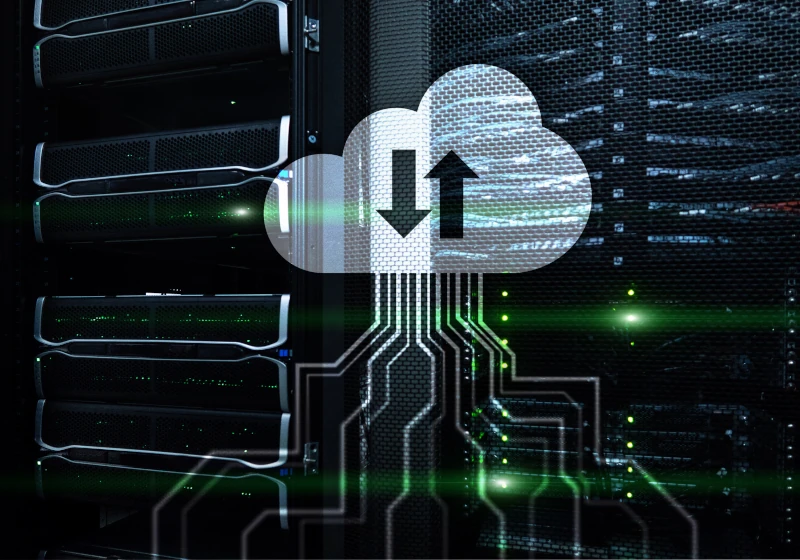Cloud Exit – A Question of Business Survival?
Is it acceptable for Windows to spy on its users? Is it normal for Gmail to read all its users’ emails? Is it tolerable that, with U.S. extraterritorial judicial mechanisms, your data in the Cloud is at the disposal of the American “friend”?
Beyond the spying on people or companies who “don’t care” because they have nothing to hide, Windows is a bad-quality product and the Cloud is a very expensive infrastructure.
Thus, through personalized support, we propose to study together your dependence on Big Tech and to find sustainable solutions to regain your digital sovereignty.
Exiting the Cloud
Cloud: The Costly Trap
There used to be machines and humans. Servers and system administrators. Computers were cared for by kind professionals. The skies were blue, and the future was bright.
Then the clouds appeared, the Cloud invaded the horizon, accompanied by swarms of influencers singing that the future was cloud-based and that the costly system administrator was a position to eliminate.
With hindsight, the reality is notably different. DevOps replaced the SysAdmin, but at double the salary, becoming a specialist limited to a single stack, since mastering AWS obviously has nothing to do with mastering Azure, as you’d expect.
All that for high operating costs, so-so service quality, and mediocre performance for the price paid.
The Cloud’s Indiscreet Trap
Since the major Cloud providers are American, you can be sure that your data—no matter what promises are made—is no secret to our American friends.
And if you believe your data doesn’t interest them, you might be right.
You have nothing to hide, your data is uninteresting, everything will be fine in the best of worlds.
At worst, only affiliated AIs will help themselves to your confidential data to feed their neurons.
After all, relax: if your mail carrier examined all your mail, if your car ticketed you for every violation, life would be so much simpler.
The Cloud’s Deadly Trap
A startup specializing in big data had a lot of data in the Cloud. It wanted to save money on its hosting bills, which were rising as data volumes grew.
A repatriation of its data to France, to OVH data centers in Gravelines and Roubaix, was considered.
The activity of this startup had generated an exceptional mass of data. That data was its value and its reason for being. The Cloud’s pricing for data export turned out to be unaffordable.
Stuck between unsustainable hosting costs and an exorbitant price to extract its data, the company was forced to file for bankruptcy.
You shouldn’t wait until you’re in trouble to discover the Cloud’s abusive pricing and, in this extreme case, the impossibility of repatriating your data.

Cloud Exit
Cloud Exit Is a Necessity
Time is a great revealer. A reversal has begun. The math has been done.
Placing your servers with a French or European hosting provider, or in your own facilities, and ensuring that your information system is managed by a diligent IT service provider is no longer an outdated reflex—it’s a matter of common sense, to protect the future.
Most of the services offered by the Cloud can be replicated on cost-effective servers with higher reliability and better performance—for just a fraction of the Cloud’s cost.
Moreover, these insights have been consistently confirmed by our clients.
Contact us for a detailed assessment of your company’s Cloud exit strategy and your path back to data sovereignty.
Your data sovereignty is your company’s independence.
VMWare Exit
As you may know, VMWare is the market leader in virtualization. It was recently acquired by Broadcom for $67 billion.
As a result, the free version was discontinued in February 2024 to offset the massive acquisition cost. It was later reinstated in April 2025, showing the limits of Broadcom’s coercive strategy. Indeed, VMWare licenses have often quadrupled in price. In addition, the new sales policy eliminates perpetual licenses, replacing them with subscription-based ones—far more profitable for Broadcom.
All of VMWare’s partnership agreements were terminated. The new contracts require a minimum annual revenue of $500,000. At the same time, more than 3,000 VMWare employees were laid off to cut costs—at the expense of service quality.
This acquisition and its consequences are typical of a commercial model where the future is never guaranteed and no reliable forecasts can be made. Suddenly, pricing conditions change drastically, and license costs become prohibitive.
That’s why we’re replacing VMWare with Xen, the open-source hypervisor1which ensured the success of Amazon Web Services in high-performance PVH mode.
According to feedback from our clients, compared to a similar Amazon EC2 instance, our Xen instances running in PVH mode are two to three times faster.
The need to replace VMWare is no longer a burden. With Xen, it becomes an opportunity!

Turning a constraint into an opportunity.
Leaving Windows
Leaving Windows is no small thing. You probably don’t yet realize the savings (in time, money, and stress) that this change will bring you.
Beyond cost savings, you’ll improve the quality of your information system—and that improvement is priceless.
Before you move away from Windows, make sure your information system isn’t dependent on it.
Is your business software a SaaS application accessible via the web? Then leaving Windows will be easy. In fact, any web browser on Linux will do the job.
Votre logiciel métier est-il un SAAS utilisable à travers le Web ? Alors, la sortie de windows sera facile. En effet, n’importe quel navigateur Web sous Linux fera l’affaire.
Are you using a business application that must be installed on Windows? It’s time to look for a SaaS equivalent accessible via the web—because one likely exists.

Strategically Plan
Your Windows Exit
Using Free Software
At first, you can proceed gradually. Replace your usual software with open-source alternatives even before leaving Windows.
Open-source software runs on Windows, Mac, and Linux. Overall, they’re usually just as good—and often better—than paid versions.
They’re also easier to use, and their interfaces don’t change from one version to the next.
- The interface of open-source software doesn’t change.
- The file formats of open-source software don’t change.
- Over time, your use of open-source software doesn’t change.
- The time you invest in learning them lasts a lifetime.
For centuries, a hammer or a screwdriver has been used the same way! Asoftware is just a tool—an extension of your will. It should be as predictable and reliable as a hammer or a screwdriver. 😉
Simplify your life. Choose open-source software—it’s practically2You have to take into account the time and/or cost of training, but it is a small investment that will be returned to you a hundredfold. free.
Changing Operating System (OS)
Did you know switching systems is very simple? Take a Windows machine—probably a little tired—and install Linux. In less time than it takes to reinstall Windows (since Linux installs faster!), you’ll have a computer that feels brand new. Windows ages machines, while Linux rejuvenates them.
Since you’ll already be familiar with open-source software, the change will feel effortless. You’ll also appreciate the speed, reliability, and—most importantly—the lack of spying. Linux is a polite companion: it respects your data and doesn’t look over your shoulder. Unlike Windows or Mac, which intrude on your privacy, Linux protects your personal information.
And your accountant will love the drop in IT expenses… You can’t please everyone.

